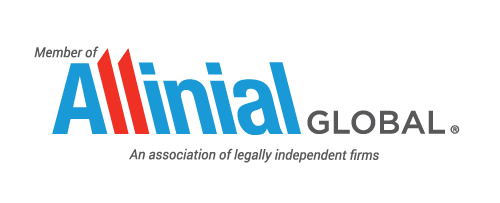With the impending deadline for annual CIT filing on 31 May, companies in China should check to ensure that they have taken advantage of all applicable tax incentives. Since 2022, the Ministry of Finance and the Taxation Bureau, have implemented a series of preferential Corporate Income Tax (CIT) policies to support the development of Small and Low-profit Enterprises (SLPEs), incentivizing enterprises to invest more in Research and Development (R&D), and promoting the development of innovation in enterprises. Whilst these tax incentives would help enterprises in cash flow and in reducing tax burden, it is important that they are aware of them and apply on or before the deadline accordingly.
Table of Contents
CIT incentives for Small and Low-profit Enterprises
SLPEs are enterprises that operate in non-restricted or unprohibited industries and fulfil the following conditions: (i) their annual taxable income should be under RMB 3 million (about USD 450 thousand); (ii) they should have no more than 300 employees; and (iii) their total asset value should not exceed RMB 50 million (about USD 718 thousand). The CIT incentive for them is as follows:
|
Annual Taxable Income (ATI)
|
Tax Base
|
CIT Rate
|
Effective CIT Rate
|
Effective Period
|
|---|---|---|---|---|
|
The portion below RMB 1 million |
ATI*12.5% |
20% |
2.50% |
As of 2022.12.31 |
|
The portion between RMB 1 million and RMB 3 million |
ATI*25% |
20% |
5% |
2022.1.1-2024.12.31 |
Related reading: Seven Areas of Tax Savings for SMEs in China for 2022-2024
CIT Incentives for Small and Medium-sized Enterprises (SMEs), Technology-based Small- and Medium-sized Enterprises (TSMEs)
Regarding equipment renewal and technology upgrade, from 1 Jan 2022 to 31 Dec 2022, the newly acquired equipment and apparatus of SMEs with a unit value of RMB5 million or above, certain percentage (50% or 100%) of the cost would be treated as allowable deduction for CIT in the year of purchase.
When a company is certified as a TSME, its losses from the five years prior to the year in which it becomes certified may be carried forward to future years to the maximum of ten years. In addition, TSMEs may also be treated as candidates of High and New Technology Enterprises (HNTEs) by the local government and get additional incentives to assist their expansion.
CIT Incentives and Pre-tax deduction High and New Technology Enterprises, and Service Enterprise with Advanced Technology
HNTEs supported by the State and Service enterprise with advanced are subject to a reduced CIT rate of 15%. As for one of the fundamental innovative tax policies in China, service enterprises with advanced technology benefit from the provision of business process outsourcing (BPO), information technology outsourcing (ITO), and knowledge process outsourcing (KPO), service trade. For them, newly acquired equipment and apparatus by high-tech enterprises from 1 Oct 2022 to 31 Dec 2022 are allowed to be deducted in full in the year of assessment when calculating taxable income.
R&D Expenses
China allows for the maximum deduction of the enterprise’s R&D cost to promote innovation. For R&D expenses actually incurred by TSMEs, incurred from 1 January 2022 onwards, if they do not form intangible assets and are included in current profit or loss, they will be deducted on a pre-tax basis at 100% of the actual amount on top of the actual deduction as required; if they form intangible assets, they will be amortised before tax at 200% of the cost of the intangible assets.
For enterprises that currently apply a 75% pre-tax deduction rate for R&D expenses, the pre-tax deduction rate will be increased to 100% for the period from 1 October 2022 to 31 December 2022.
80% of the actual costs incurred in R&D activities that companies assign to overseas organisations (not individuals) must be listed as the entrusting party’s commissioned overseas R&D expenditures. The pre-tax additional deduction is available for commissioned overseas R&D expenditures up to a maximum of two-thirds of domestic R&d expenditures.
For expenses associated with R&D activities that companies entrust to external organisations or individuals in mainland China, 80% of the actual cost must be accounted for in the entrusting party’s R&D expenditures and be eligible for the additional deduction; further additional deductions must not be made by entrusting party.
Special Offerings of CIT incentives in China's several regions
CIT incentives in Shanghai Lin-gang Special Area: Since 2020, companies registered in the Lin-gang Special Area of the Shanghai Free Trade Zone(FTZ) may apply for a reduced CIT rate of 15% for a period of five years from the day of incorporation.
To qualify, the enterprise’s main business must be in four key industries – integrated circuits (IC), artificial intelligence (AI), biomedicine, and civil aviation. And it must engage in substantive production and R&D activities in the specific key industries of Lingang New Area.
CIT incentives in Qianhai Shenzhen-Hong Kong Cooperation Zone: To encourage Hong Kong companies to set up their headquarters in Qianhai, a slew of preferential policies and financial incentives have been ushered in, including, notably, a reduced corporate income tax (“CIT”) rate of 15% – as opposed to the standard national rate of 25% in Mainland China – for qualified enterprises until 31 December 2025. Eligible foreign-invested enterprises can also benefit from this concessionary rate. They should ascertain whether their business falls within the remit of Qianhai’s Catalogue for Encouraged Industries Eligible for CIT Preferential Treatment, which spans 30 sectors and covers five general industry sectors: commercial services, cultural and creative industries, information services, modern logistics, and technology services.
End notes
How is SLPE different from SME?
The size of enterprises: large, medium, small. SME only point out the size: small or medium. The classification of SLPE (Small and Low-profit Enterprise) is required on size and revenue. It should be not only small and also low profit. Sometimes this small difference will affect whether an enterprise is suitable for a preferential tax policy.
Criteria for TSMEs (Technology-based Small- and Medium-sized Enterprises)
http://www.chinatax.gov.cn/chinatax/n810356/n3010387/c5181963/content.html
Employees ≤ 500, annual sales revenue ≤ RMB 200 million and total assets ≤ RMB 200 million; Requirement for their product and service; Requirement on the enterprise credit; Requirement on the certification or prize, etc.
Criteria for HNTEs (High and New Technology Enterprises)
http://www.gov.cn/fuwu/2020-06/08/content_5518015.htm
Requirement on the founding time of the enterprises; the percentage of total R&D expenses from total sales revenue for the same period in three fiscal years; the percentage of total R&D expenses incurred in China from total R&D expenses of the enterprises in three fiscal years; the percentage of revenue from high-tech products (services) from the enterprise’s total revenue for the same period in three fiscal years; enterprise credit; evaluation of innovative capacity.
Criteria for service enterprise with advanced technology
http://www.sz.gov.cn/hdjl/ywzsk/kjcxw/kxyjjgqrfw/content/post_10148339.html
Requirements on business scope (BPO, KPO, ITO, service trade); the revenue of the enterprise’s technologically advanced service business and the revenue of its offshore service outsourcing business; employee education background; enterprise credit.

